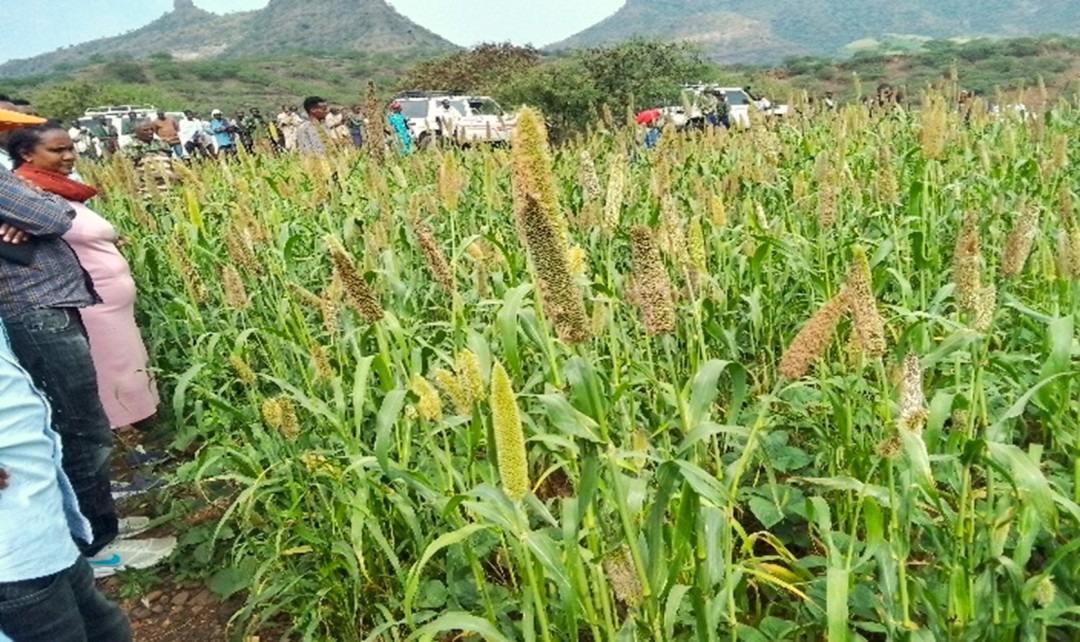Intercropping has long been a common practice among smallholder farmers in areas with minimal and erratic rainfall, such as Ziquala woreda in Ethiopia. With limited livelihood opportunities and nutrition diversification, farmers in this area have been facing challenges related to recurrent drought and infertile soil. In response to these challenges, the Sekota Dry-Land Agricultural Research Centre recommended the intercropping of pearl millet and mung beans as a climate-smart and risk-aversion innovation.
In collaboration with the research centre, RAISE-FS project conducted a pilot project in 2023 to demonstrate the benefits of pearl millet-mung bean intercropping in Ziquala woreda. The aim was to increase yield per unit area, maximize resource use, and reduce climate risks, ultimately improving the livelihoods, nutrition, and consumption diversification of resource-poor farmers.

The pilot project was conducted in two kebeles of Ziquala woreda, involving 20 farmers (17 men and 3 women) with equal representation of youth and adults. The selected farmers received training and guidance from researchers and local experts, and they actively participated in the project. Three different treatments were implemented in the pilot plots: sole pearl millet, pearl millet and mung bean intercropping, and sole mung bean, with all other recommended agronomic practices applied similarly.
During harvesting, it was evident that the pearl millet-mung bean intercropping was more productive and promising than sole cropping. Farmers expressed their interest in this new technique, noting its ability to thrive in dry and hot conditions while providing higher yields and more stalks for animal fodder. The visiting farmers also liked the intercropping practice because it gave bigger and greener crops, more branches, and showed better performance than sole cropping. They witnessed that the intercropped plot had more yield and more stalks than the sole plot. The feedback from farmers and the observed outcomes led the team to conclude that the intercropping innovation was superior to the current monocropping system.
Moving forward, there is a plan to scale up this innovation to more areas and farmers. A stakeholders’ workshop on scaling readiness will be organized to sustainably expand the adoption of pearl millet-mung bean intercropping within the larger community. This initiative aims to empower farmers to grow more food, increase their income, and enhance their future food and nutrition security.
The success of the pilot project has highlighted the potential of climate-smart agricultural practices to mitigate risks and improve livelihoods in areas with moisture deficits. By embracing innovative approaches like intercropping, smallholder farmers in Ziquala woreda can build resilience against climate uncertainties and work towards a more sustainable and prosperous agricultural future.

